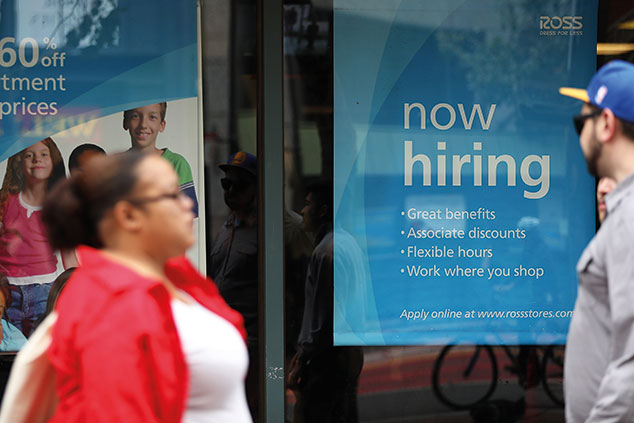
According to the futures market there is now a 40% chance of this scenario. Traders may have been spooked by the market sell-off (see below) and signs of slower growth overseas. But it looks as if they may be in for a nasty surprise.
The evidence mounts
Investors appear to be ignoring the mounting evidence of incipient inflation. A key source for price rises is the labour market, as higher salaries tend to bolster overall demand, raising prices and in turn prompting requests for further wage rises. Labour markets are tightening around the world.
In the US, wages grew at their fastest pace for nine years – 3.1% – in October. And unemployment fell to 3.7% in September, the lowest rate since 1969. Meanwhile in Japan unemployment is at 2.3%, close to this spring’s record low of 2.2%, and wage growth has accelerated to 2.6% year on year, as Jonathan Allum points out in The Blah. Intriguingly, a “proxy resignation industry” has emerged, says Leo Lewis in the Financial Times. People are willing to pay a professional quitter $440 for them to resign from their job. That is surely a sign they have been offered more money elsewhere.
In the UK, wage growth reached its highest level since the financial crisis in the three months to August, with average weekly earnings 3.1% higher than last year. The unemployment rate stood at 4% in August, its lowest rate since the mid-1970s. Companies are now beginning to warn that profits are being eroded by rising staff costs, say Sarah Gordon and Naomi Rovnick in the Financial Times.
Nasty surprise for markets
Given there is wage pressure in the US spanning a broad variety of sectors, including IT, consulting and financial services, and the unemployment rate has fallen below 4%, inflation could easily reach 3.5% next year, says Stephen S. Roach in Finanz und Wirtschaft. At the same time, the Fed has arguably already “fallen behind the curve” or left it too late to squeeze out incipient inflation gently. Monetary policy typically takes 12-18 months to kick in.
And core, or underlying, inflation (which strips out volatile food and energy prices) is at 2.1%, already the same level as the main interest rate. With inflationary pressure strengthening, the odds are the Fed will soon have to raise the price of money beyond investors’ collective interest-rate “comfort zone”, as Roach puts it. The overpriced US market, which sets the tone for the world, won’t like that one bit.
The FAANGs lose their teeth
Just a few months ago, Apple became the world’s first trillion-dollar stock. By the middle of this week the company, in conjunction with the four other tech stocks that have spearheaded the US bull run – Facebook, Amazon, Netflix, and Google – had lost that much market value from their 2018 highs.
The latest slump in the so-called FAANG stocks has left each of them in a bear market (defined as a decline of 20%) and wiped out the Nadaq’s gains for the year. The jitters spread to Europe, with the pan-European Stoxx 600 tech index down by 15% this month – already the worst quarterly showing since 2011.
Apple revealed it had reduced production orders for its three new iPhones, while Chinese competition authorities say they have found proof of antitrust violations among the world’s top three semiconductor companies. Investors remain rattled by the prospect of regulators clamping down on the likes of Facebook, and by the trade war between the US and China. Signs of slower growth outside the US aren’t helping, either.
However, the underlying problem is the gradual shift in the liquidity backdrop – central banks have stopped flooding markets with cash and are slowly reining in their money-printing programmes or raising interest rates.
“The most high-valued assets tend to be the most sensitive to fears of a global macro regime change,” as UBP’s Koon Chow puts it the Financial Times. Dwindling liquidity has started to prompt investors to look more closely at the FAANGs’ towering valuations and wonder whether the fundamentals really justify them. The same goes for the overall US market, still on a whopping cyclically adjusted price-earnings ratio of more than 30, while profit growth is slowing. Expect more turbulence ahead.